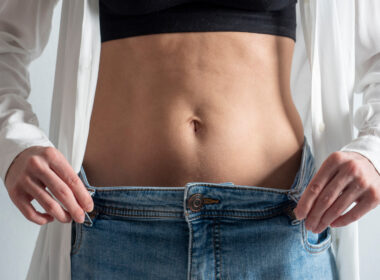If you dread perimenopause, you’re not alone. Global pharmaceutical market analysis shows that peri- and post-menopausal women’s health continues to be a growing piece of the pharmaceutical market and a bounty for drug companies. Close to half (46%) of all women aged 45 to 60 are concerned with the effects of menopause on their health.
Arriving at menopause, defined as being without menstruation for a full 12 months, can take a long time and the perimenopausal stage can make it feel even longer with unpredictable bleeding, hot flashes, mood changes, and changes in libido. How would the natural woman, who is into knowing her body, charting, and using as few drugs as possible, manage this inevitable life stage?

This past week, I had the privilege of training at University of North Carolina’s School of Medicine with some of the top fertility docs in the area, learning a new fertility awareness method from a pair of global experts from Germany. A lot of smart people, way smarter than me, but more importantly, they were all dedicated to natural approaches to women’s reproductive health, including during perimenopause.
They recommended charting your biomarkers of fertility because it is critical during perimenopause when you may go a few months without a period, or bleed every 3 weeks. As with the start of your cycles in your pre-teen or teenage years, ovulation is not occurring regularly, and it’s important to know if and when you are ovulating.
The average perimenopausal woman is busy with career, family, travel and household duties. She may also have developed chronic health problems like high blood pressure, poor blood sugar control, or even arthritis over the years. Aging gracefully is a key concern for her, when she’s not taking care of her own aging parents or making sure Johnny has clean laundry before he goes back to college.
Cycle charting is versatile and can fit into this busy lifestyle using a phone app or a paper chart kept in the bedside drawer. Done once a day, charting is a few minutes of time to yourself and for yourself so that you can be aware of your times of fertility while gaining insight into the hormonal fluctuations that may be wreaking havoc on your relationships. It’s smart “me-time”.
How smart? Well, it’s definitely smarter than taking the Pill, which could mask and forestall the natural progression of menopause. Taking exogenous hormones at this stage of the game may also increase risk of breast cancer in addition to the already elevated heart risk.
Charting helps you understand your body and can help you gracefully pass through “the change” without increasing the chances of conception. By virtue of it not being the Pill, it may also improve your sex life by eliminating the risk of increased vaginal dryness.
What might the perimenopausal woman learn from her chart?
- Absence or presence of ovulation based on cervical fluid pattern or temperature shift
(Keep in mind that ovulation is a sign of health and youth.) - Return of fertility based on presence of sperm-loving cervical fluid (marker of estrogen levels)
- Length of post-ovulatory phase, also called the luteal phase (marker of progesterone levels)
- Any “patterns” in irregular bleeding (You won’t know unless you chart!)
- Any correlation of hot flashes with time in her cycle (i.e. Are they more frequent when estrogen is supposed to be rising?
If you are noting a correlation between phase of cycle and hot flashes, mental fogginess, mood swings, lethargy, low sex drive and other annoying symptoms of a natural process, here are some effective natural management tips that are recommended by both allopathic physicians as well as holistic practitioners because they have been shown to actually work.
Things to Decrease in Perimenopause
1. Xenoestrogens
These are industrial compounds that bind to the same receptors as human estrogens, but disrupt natural reproductive functioning by acting as false messengers. They are also shown to increase breast cancer growth.
Found in 4-MBC sunscreen lotions, BHA food preservative, FD&C Red No. 3, parabens in lotions and shampoos, along with the birth control pill
2. Caffeine, alcohol, refined sugar, refined grains, spicy or greasy foods—all of which promote inflammation (you don’t need more heat!) and can trigger stress, which is in turn a trigger for hot flashes
3. Red meat: Stick to 2-4 ounces of grass-fed, hormone-free beef or bison once a week
Things to Increase in Perimenopause
1. Cooling foods: melon, bean sprouts, white ocean fish, celery, apples, asparagus
2. Flaxseed
My favorite because it is so versatile. Use in smoothies, on hot cereal, sprinkle on salad, add to low carb baking, even burgers and meatloaf in place of bread crumbs. It’s full of lignans which are chemoprotective and phytoestrogenic. Great source of fiber, omega 3, and antioxidants for heart protection too.
Grind before use to get the good fats. Take ¼ cup 3-7 days a week.
3. Bioflavonoids
These are compounds found in cherries, cranberries, blueberries, bilberries, whole grains, grape skin, and red clover. They compete with excess estrogen in the body.
1000mg of bioflavonoids with vitamin C is shown to relieve hot flashes.
4. Indole-3-Carbinol
Another yummy food compound with anti-estrogenic effects. Found in the Brassica family of cabbage, cauliflower, broccoli, kale, and brussels sprouts.
Aim for 4 to 6 servings per week. Really easy to get if you’re into baked cauliflower or tossing baby kale into smoothies or soups.
5. “Paced respiration”
Recommended by the North American Menopause Society for staving off a hot flash.
All you do is breathe into your abdomen (place your hand there to help you focus) – 4 counts in, hold for 1, then 4 counts out. This shuts down your “fight or flight” and kicks in your “rest and digest.”
Does this approach make sense to you? Would you try charting just to rule out the possibilities that the Pill may be compromising your health during your perimenopausal years?
Learning with some of the most learned minds in this field was a privilege for me that showed me once again, what a gift it is, in this industrialized age, to be a naturally fertile woman. The simple knowledge of one’s self is also a privilege that rewards those who seek it out, in all stages of life.












Other natural ideas for navigating peri-menopause – herbs! Herbal medicines have been used for thousands of years for a reason – they work. I like to use Wild Yam, for example, to ease peri-menopausal tension and hot flashes. Rehmannia is great for “cooling” off and helping with hair fall-out. Ashwaganda is helpful if perimenopause occurs with anxiety or thyroid dysfunction. Always talk to a licensed herbalist before self-prescribing. Natural medicine is per the individual, not “one size fits all!”
Other than “cooling foods,” as an acupuncturist, I recommend foods that nourish your Kidney (similar to the adrenal gland, where hormones are produced, in Western medicine) – barley, buckwheat, oats, and rice; alfalfa sprout, artichoke, asparagus, cucumber, mung bean sprout, mushrooms, pea, potato, seaweed, string bean, squash, sweet potato, tomato, water chestnut, yam, and zucchini; apple, apricot, avocado, banana, blackberry, blueberry, lemon, lime, mango, mulberry, peach, pear, persimmon, pineapple, pomegranate, and watermelon; coconut (coconut oil, coconut milk, unsweetened fresh or dried coconut), sesame seeds and tahini, black sesame seeds, and walnut; aduki beans, black beans, kidney beans, lima beans, mung beans, fish and seafood (except shrimp and prawns), beef, duck, goose, pork, rabbit, chicken and duck eggs; cow, sheep and goat dairy products (if tolerated), ghee. Yogurt is considered especially cooling and yin nourishing; beef bone marrow broth, fish oil, raw honey, and olive oil.